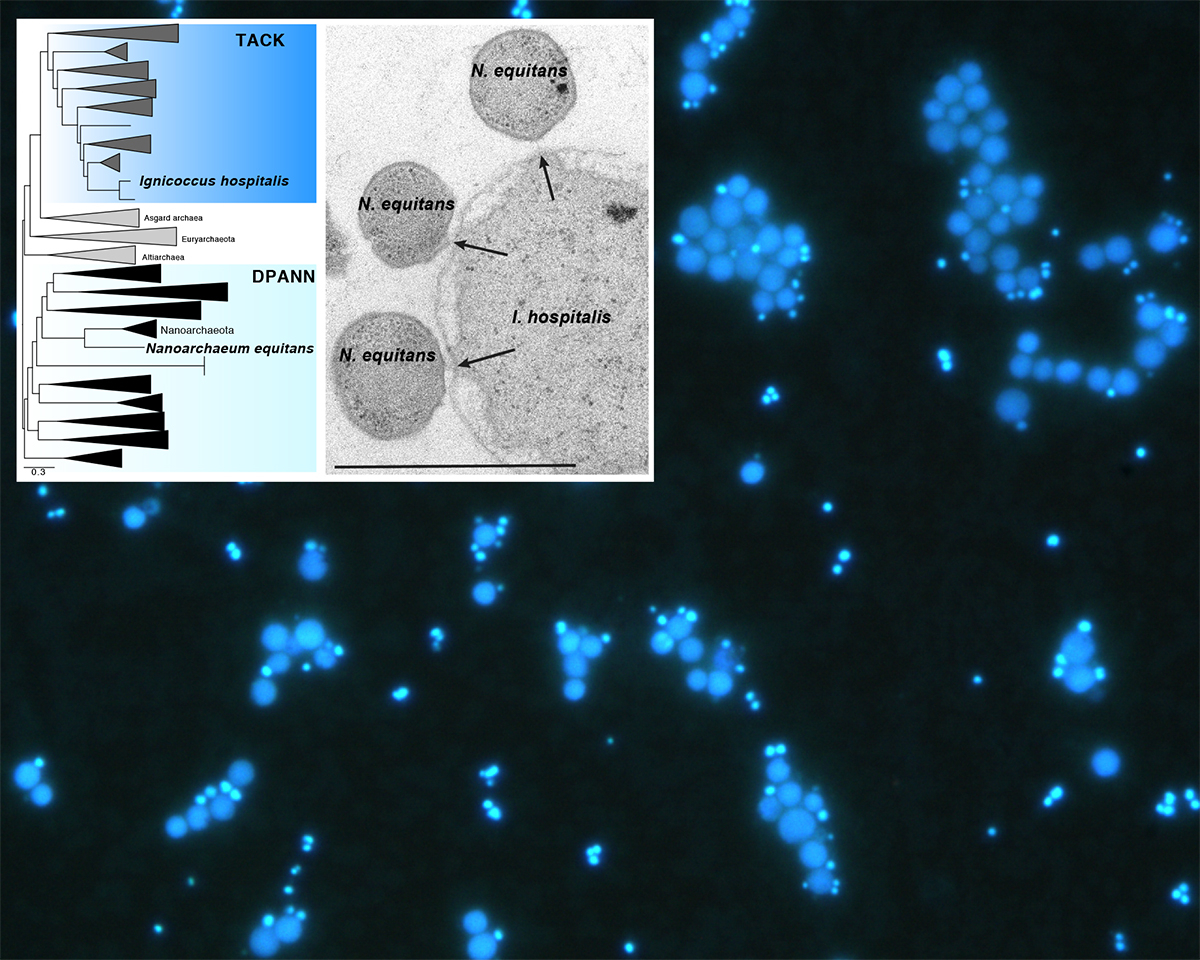Gordon and Betty Moore Foundation award for model of aquatic symbiosis
“We are extremely honored to be recipients of this award. The award will allow our international consortium of experts to work together to reveal the secrets that shape the symbiosis of the archaeal symbiont Nanoarchaeaum equitans and its host Ignicoccus hospitalis.” says Dr. Spang. These amazing organisms were isolated from marine hydrothermal vent systems North of Iceland by Dr. Huber in 2002 and have been kept in co-culture ever since. Their study has already provided astonishing insights into the mysterious world of archaeal cell biology. Yet, much remains to be learned about the nature of their interaction. Is it a truly peaceful symbiotic relationship or a more complex one that involves more stealing than sharing? Ultimately, by applying a wide range of tools from genetics to new types of imaging to this experimental model of symbiosis, we expect the work of our team to shed light on the ecology and evolution of these Archaea and their relatives, and on the emergence of cellular complexity itself.

Our experimental model of symbiosis: the archaeal host Ignicoccus hospitalis (dark blue) and its symbiont Nanoarchaeum equitans (light blue) visualized using fluorescence microscopy (Dr. Huber). Inset: Phylogenetic tree of Archaea (Dr. Spang) and TEM image (Dr. Huber/Dr. Rachel) highlighting the host and the symbiont.
The Gordon and Betty Moore Foundation’s Symbiosis in Aquatic Systems Initiative is investing $19 million over the next three years to support 42 teams of scientists to advance model systems in aquatic symbiosis. The initiative’s funding aims to equip the scientific community with infrastructure such as new genetic tools, cultivation methods, and nanoscale microscopy to improve experimental capabilities in aquatic symbiosis research over the coming decade. As a key component of this funding, the teams will work collaboratively across the grant portfolio to develop and share their tools and methods with each other and with the research community.
The Symbiosis in Aquatic Systems Initiative aims to advance knowledge of how symbiotic associations function and participate in ecology and evolution in marine and freshwater systems. The Symbiosis Model Systems portfolio is an important part of the initiative’s strategic approach to invest in technology and resources to enable discovery.
An aquatic symbiosis model system is a well-studied association of two or more freshwater or marine organisms that can be manipulated in the laboratory to reveal underlying controls of gene expression and function, determine how the organisms interact, investigate how the organisms contribute to ecosystem processes, and understand their evolution.
On the website of the Gordon and Betty Moore Foundation you can read more about the initiative Building community to accelerate the pace of model system development in aquatic symbiosis.
